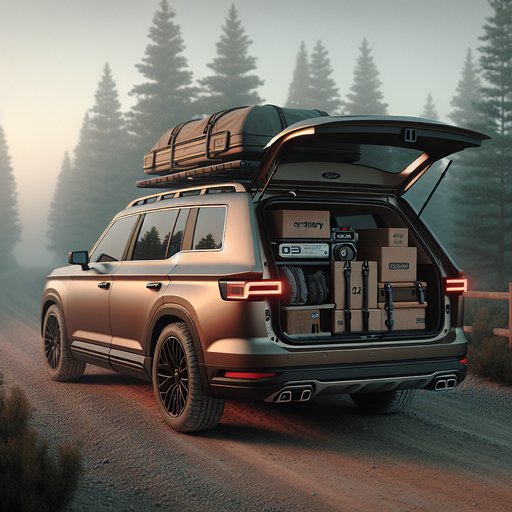
We spent a week with a 2024 Subaru Outback 2.5L AWD to quantify real cargo volume using standard boxes, evaluate roof-rack ease with common accessories, and audit the load-securing hardware. Here’s what our hands-on testing revealed.
Our test car was a 2024 Subaru Outback with the 2.5-liter flat-four (182 hp, 176 lb-ft) and CVT driving standard AWD. Ground clearance is a useful 8.7 inches, and factory specs list 32.5 cu ft of cargo space behind the second row and 75.7 cu ft with it folded. Curb weight is just over 3,600 lb; towing is rated to 2,700 lb for the 2.5L. The cargo area is wide and squared-off, with a nearly flat load floor when the 60/40 seatbacks are down.
Testing included daily errands and two highway trips (65–75 mph), plus structured cargo measurements. We used 12x12x12-inch moving boxes (1.0 cu ft each), stacking to the window line and then to the headliner, with and without the cargo cover. We also deployed the integrated crossbars, mounting a 16 cu ft cargo box and a fork-mount bike tray, and noted installation time, wind noise, and fuel economy impacts. Measured cargo volume with boxes: with the rear seats up, the floor accepted a 3x3 grid (nine boxes) and safely stacked two high to the window line for 18 boxes total (about 18 cu ft of rigid cargo).
Removing the cargo cover and stacking to the headliner, we fit 25 boxes before the hatch contacted the upper rear row. With the second row folded, the floor accommodated a 6x3 base (18 per layer). Two full layers were easy (36 boxes), and a partial third layer brought the count to 44 boxes before impeding rear visibility and hatch closure. These counts reflect real packing efficiency and explain the gap to the SAE volume figures, which account for irregular shapes and soft luggage filling voids.
Roof-rack usability is a standout. The Outback’s integrated crossbars swing out tool-free; it took 50 seconds to deploy and lock them in place. Crossbar spread is sufficient for a medium cargo box, and the hatch cleared our box on the forward-most setting. We kept total roof load under 150 lb, per common guidance—always verify your trim’s limits.
With the empty box mounted, wind noise rose modestly above 65 mph; with the box loaded and a bike on a tray, highway fuel economy dropped from 31.2 mpg (control run at 70 mph) to 28.6 mpg. Crosswinds induced minor buffeting but no whistle with the bars torqued evenly and fairing installed on the box. Load securing and usability: four metal D-rings at the cargo floor corners are easy to access and accept ratchet-strap hooks; two bag hooks keep groceries upright. A 12V outlet on the right wall powered a cooler during our trip.
Quick-release handles in the cargo area flop the 60/40 seatbacks forward; the resulting floor is flat enough for boxes to slide without snagging. Underfloor storage held the cargo cover and soft straps; the spare and jack are beneath. There are threaded points to add a cargo net, though a center pass-through is absent, so skis require a 40 side folded. Overall, the Outback delivers excellent real-world utility: a low lift-over, square aperture, trustworthy tie-downs, and the most user-friendly roof setup in the class.
If you frequently haul rigid loads, expect about 18 cu ft to the window line and roughly mid-40s cu ft with seats down using 12-inch boxes; soft bags will exploit more of the published volume. For families and outdoor users who value roof versatility and easy securing, it’s a top pick; if you need a 40/20/40 rear seat or higher roof load ratings, consider alternatives, but few are this hassle-free.












